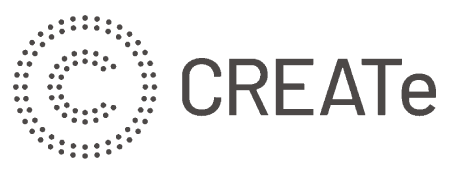PRIMARY SOURCES
ON COPYRIGHT
(1450-1900)
Browse Documents By...
Original Language...
Documents For...
Browse Commentaries By...
Browse Referred Persons By...
Commentary on:
Sofer Responsum on Vilna-Slavuta Talmud Dispute (1835)
Back | Commentary info | Commentary
Printer friendly version

This work by www.copyrighthistory.org is licensed under a Creative Commons Attribution-NonCommercial-NoDerivs 3.0 Unported License.
Sofer Responsum on Vilna-Slavuta Talmud Dispute (1835)
Back | Commentary info | Commentary
Printer friendly version

This work by www.copyrighthistory.org is licensed under a Creative Commons Attribution-NonCommercial-NoDerivs 3.0 Unported License.
Primary Sources on Copyright (1450-1900)
Identifier: j_1835
Commentary on Sofer Responsum on Vilna-Slavuta Talmud Dispute, Pressburg, Hungary (1835)
Neil W. Netanel
School of Law, University of California at Los Angeles, USA
Please cite as:
Netanel, N. (2024) 'Commentary on Sofer Responsum on Vilna-Slavuta Talmud Dispute, Pressburg, Hungary (1835)', in Primary Sources on Copyright (1450-1900), eds L. Bently and M. Kretschmer, www.copyrighthistory.org.
1. Full title
2. Abstract
3. Background
4. Sofer's Ruling
5. References
1. Full Title
Responsa Hatam Sofer, Likutim, Part 6, No. 57 (1835)
2. Abstract
Moses Sofer (1762-1839) ruled that rabbinic reprinting bans typically expire when the publisher sells out his print run prior to the period of exclusivity set out in the ban. He also ruled that reprinting bans serve primarily to ensure that publishers will invest in books of Jewish learning and liturgy, and thus they are enforceable worldwide.
3. Background
Rabbinic reprinting bans granted publishers a period of exclusivity, typically between 10 and 25 years, to publish a given title. In principle, the period of exclusivity was designed to give the publisher ample time to print and sell out the first edition of the book. The question arose: does the reprinting ban expire when the publisher sells out the first edition prior to the period of exclusivity set out in the ban? Rabbis also debated when reprinting bans are enforceable outside the territory in which they have been issued. Moses Sofer (1762-1839) was rabbi of Pressburg, at the time the most important Jewish community in Hungary, and a widely respected rabbinic authority. Sofer’s ruling addressed the perennial questions regarding reprinting bans in a dispute that arose over two competing editions of the Talmud: one that the Shapira printing house began to print in Slavuta, Volhynia (in present day Ukraine), in 1835, and the second that the Romm press began to print in Vilna that same year. The dispute embroiled hundreds of rabbis and rekindled a smoldering internecine battle between rival streams within Judaism, the Hasidic movement and its traditional rabbinic opponents, the “Mitnagdim.”
The dispute between the Slavuta and Vilna publishers erupted some two decades after a similar dispute between the Slavuta press and the Yaffe press in Kapust, which began printing its own edition of the Talmud in 1816. In each case, the Slavuta press insisted that its rival had violated the rabbinic reprinting bans issued for the Slavuta publishers’ successive editions of the Talmud. And each of the Slavuta publishers’ rivals argued that the ban against competing editions of the Talmud had automatically expired the moment the Slavuta press sold out its print run, even though the nominal term of years set forth in the ban had not yet come to an end. Moreover, the rivals further insisted, a ban does not apply outside the publisher’s local market. As rabbinic authorities grappled with those central issues regarding reprinting bans’ duration and geographical scope, they engaged in a protracted and lively debate about the justifications and legal foundations for rabbinic reprinting bans.
4. Sofer’s Ruling
Sofer weighed in on the Slavuta Talmud controversy in a short, undated responsum. In that ruling, Sofer situates his discussion of the controversy within the framework of an earlier disputation with he had engaged with Mordekhai Banet. That back and forth had involved a 25-year reprinting ban issued for the Hebrew scholar Wolf Heidenheim’s mahzor, a holiday prayer book, that featured a translation of the Hebrew prayers in High German.Banet held that under the Jewish law of wrongful competition, a publisher does not generally have a right to prevent reprinting by a second publisher, certainly when the first publisher has already sold out his print run. Banet held further than reprinting bans are enforceable only within the territory in which they are issued. Finally, Banet held that even if reprinting bans are enforceable in principle, they should not be enforced against rival Jewish publishers when, in practice, Christian publishers can publish Jewish texts with impunity.Sofer responded that Heidenheim’s reprinting ban remained in force for that full 25-year period even though Heidenheim had sold out his first printing.
Sofer reasoned that the rabbis who issued the 25-year ban for Heidenheim knew that Heidenheim lacked sufficient means to produce, in a single print run, a sufficient number of holiday prayer books for all of the worshippers who require a German translation in order to understand the prayers. Rather, the rabbis anticipated that Heidenheim would have to print multiple editions to satisfy that important need. Accordingly, Sofer posited, Heidenheim was entitled to issue and sell out multiple editions of his mahzor at various intervals during the 25-year period without giving cause for the ban to expire prior to the end of that period. However, the reprinting ban for the Slavuta press’s third edition of the Talmud was constructed differently than the ban issued for Heidenheim. The Slavuta ban ran 15 years from the Slavuta press’s completion of that edition. The rabbis who issued that ban determined that it should last for 15 years after printing had been completed because they assumed that it would take that period of time for the Slatuva press to sell out the entire edition, not because the Slatuva press would have to use sale proceeds to print more volumes during that 15-year period. As it turned out, however, the Slavuta publishers did not need the entire period of the ban to sell out their edition. Accordingly, Sofer held, the ban is no longer in force. Indeed, Sofer stated, under those circumstances a reprinting ban automatically comes to an end upon the sale of the entire edition even if the issuing rabbis stated explicitly in their reprinting bans that the ban would last for the term of years set out in the ban. Rabbinic decisors, Sofer ruled, have no authority to decree that a ban will remain in force for the full term of years even if the books have all been sold.In explaining this holding, Sofer reiterates central themes from his earlier response to Banet, but also backs away from his previous position in some respects. He states that reprinting bans are not necessarily based on preventing wrongful competition or protecting an established business relationship. Rather, reprinting bans serve to ensure that publishers will invest in books of Jewish learning and liturgy. Otherwise, without reprinting bans, the publishing of such books will cease—for no one would be fool enough to invest his savings in publishing a book when others can freely reprint—and the study of Torah [i.e., Jewish learning] will come to an end. Therefore, Sofer continues, rabbis of old did not institute reprinting bans for the good of the author, but rather for the sake of sustaining and expanding the study of Torah. And as such, rabbinic authorities in the early days of print established the principle of reprinting bans as a matter of binding Jewish law—not merely as rabbinic regulation. Accordingly, reprinting bans apply worldwide, to all the Jewish people wherever they are, and, furthermore, may forbid Jews from purchasing books printed in violation of the ban.
On the basis of that legal foundation for reprinting bans, Sofer then reasons that if, in fact, the Slavuta publishers have sold out their print run or if the Romm press purchases the outstanding volumes, the Romm press is entitled to print its edition of the Talmud even though the term of years set out in the reprinting ban for the Slavuta Talmud has not run its course. The rabbis of earlier generations instituted reprinting bans to promote Jewish learning for the benefit of all of Israel, not to benefit publishers per se. For that reason, present-day rabbis have no authority to issue reprinting bans that do merely serve the interests of a particular publisher rather than benefiting all of Israel. Consequently, once the publisher protected by the ban has sold all of his books, the dictum that rivalry among scholars increases the study of Torah applies and competition must be allowed. In those circumstances, competition among printers to be the first to issue the next edition of the work in question, whether it be the Talmud or another book of Jewish learning, will lead to greater availability of such books and greater study of Torah.
5. References
This commentary draws heavily on the much fuller discussion in Netanel, N., From Maimonides to Microsoft: The Jewish Law of Copyright Since the Birth of Print (New York: Oxford University Press, 2016), pp. 168-205.











